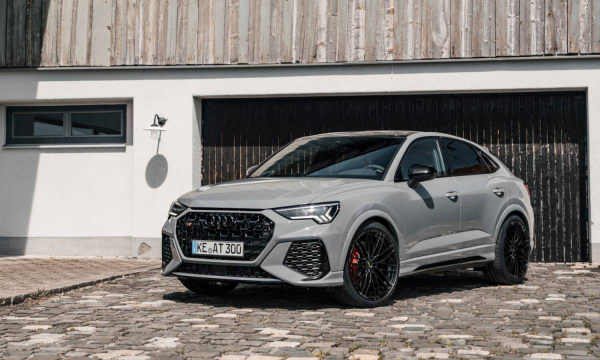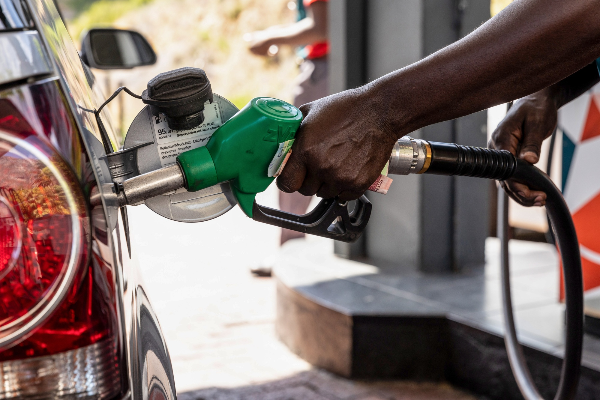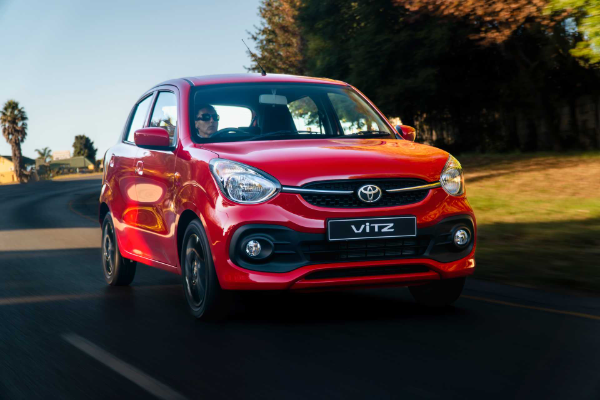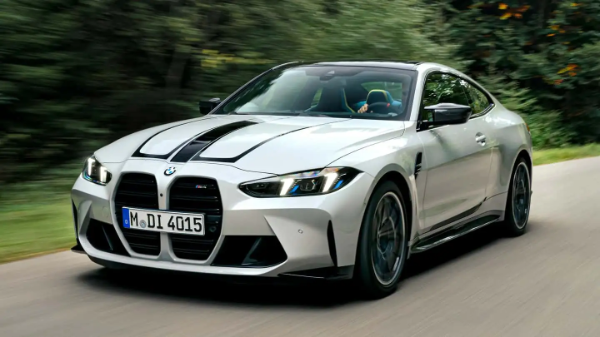Honda Fit vs Kia Rio vs Mazda2: And the winner is…
The B-segment hatchback realm may be under siege from the ever-increasing threat from crossovers, but there is no doubt that those shopping for one of these affordable hatchbacks have a number of competent options. Today we compare the recently introduced Honda Fit against two of its key rivals.
Introduced back in 2021, the Honda Fit replaces the popular Jazz model, adopting the same naming convention used for previous-generation Jazz models in other markets as the Japanese brand looks to recreate the look and image of its B-segment hatchback.
The Volkswagen Polo and Ford Fiesta are perhaps the best-known products in this segment, however, there are more than ten fantastic products to choose from in this segment. One such rival is the aforementioned Fit, which we will be comparing with the Kia Rio and Mazda2. The trio all feature automatic gearboxes, are similarly priced and have four-cylinder naturally aspirated engines. We will be comparing the Fit with these rivals to determine which is best.
Honda Fit 1.4 Comfort
Powertrain and fuel consumption
Powering the Jazz is a familiar 1.5-litre naturally aspirated petrol engine that produces 89kW and 145Nm of torque. The engine is paired with a CVT gearbox that sends power to the front wheels, resulting in the lowest claimed fuel consumption of the trio at 5.5 L/100km.
Standard equipment
The Fit, in entry-level Comfort guise, comes with 15-inch wheels, 6 airbags, ISOFIX child seat anchor points, climate control, a multifunction steering wheel, cruise control, an infotainment system with Bluetooth functionality, 3 USB ports, front and rear electric windows and cloth-covered seats.
Safety
The Fit was crash tested by The Euro NCAP assessment programme in 2020 where it achieved a 5-Star rating, including 87% for adult occupant safety, 83% for child occupant safety, 80% for pedestrian safety and 76% for its safety assistance systems.
Practicality
The Fit maintains its Magic Seat system, making its interior incredibly flexible and practical considering its relatively small dimensions. Standard boot space is 309-litres but can be extended to 849 and even 1 210-litres, depending on the seat configuration.
Price and value proposition
While not the most generously specified product, the Fit is the most modern product in this comparison and stacks up well to its rivals, offering respectable value in comfort guise.
The competition
Kia Rio hatch 1.4 LX auto
The Rio features the smallest and least powerful engine among the three, with a 1.4-litre naturally aspirated petrol engine that produces 73kW and 135Nm of torque. The engine is paired with a 6-speed torque converter automatic gearbox, allowing for a claimed fuel consumption figure of 6.2 L/100km.
The Rio has a similar specification to the Fit but loses 4 airbags, climate control and cruise control and gains a pair of fog lamps. The Rio was crash-tested by the Euro NCAP assessment programme in 2017, where it achieved a score of 3-Stars, with 85% for adult occupant safety, 84% for child occupant safety, 62% for pedestrian safety and 25% for its safety assistance systems.
The Rio has the biggest boot in this comparison, with a capacious 325-litres of space along with the longest wheelbase among the three. Looking at the Kia from a value perspective, it is the most expensive product here, but has an impressive service plan and warranty offering as standard.
Mazda2 1.5 Dynamic auto
Like the Honda, the Mazda2 is powered by a naturally aspirated 1.5-litre petrol engine, except the Mazda’s engine produces 85kW and 148Nm of torque and is paired with a 6-speed torque converter automatic gearbox, allowing for the second-best fuel consumption figure of 6.0 L/100km.
The Mazda2 has the best specification among the trio, matching the Fit but adding steering-mounted gearshift paddles, keyless start, and LED headlights. The Mazda is the least practical here, offering 280-litres of boot space while offering similar dimensions to the other two competitors. The Mazda is the cheapest product here, but both its service plan and warranty cover just 3 years.
Facts and figures:
Honda Fit 1.5 Comfort
Kia Rio hatch 1.4 LX auto
Mazda Mazda2 1.5 Dynamic auto
Engine size (cyl/size)
4-cyl, 1.5-litre petrol
4-cyl, 1.4-litre petrol
4-cyl, 1.5-litre petrol
Power/Torque
89 kW/145 Nm
73 kW/135 Nm
85 kW/148 Nm
CO2 emissions
132 g/km
137 g/km
134 g/km
Service plan (in South Africa)
4 yr / 60 000km
4 yr/ 60 000km
3 yr/unlimited
Airbag count
6
2
6
Warranty
5 yr/200 000km
5 yr/unlimited
3 yr/unlimited
Fuel tank capacity
40 litres
45 litres
44 litres
Ave Consumption *
5.5 L/100 km
6.2 L/100 km
6.0 L/100 km
Driven wheels
Front
Front
Front
Boot volume
309 litres
325 litres
280 litres
Price (estimated)
USD40000.00
USD42000.00
USD38000.00
* These DRIVEtorque estimated prices.
Verdict
Having looked at the figures, we can state with confidence that all three of these products are worthy of consideration when shopping in this segment, however, we much rather select a winner based on the data. We have selected the Honda Fit as the winner in this comparison, as it is the newest product, the most efficient, similarly specified and priced to the competition and has a service plan and warranty nearly as good as that on the more expensive Kia.
Introduced back in 2021, the Honda Fit replaces the popular Jazz model, adopting the same naming convention used for previous-generation Jazz models in other markets as the Japanese brand looks to recreate the look and image of its B-segment hatchback.
The Volkswagen Polo and Ford Fiesta are perhaps the best-known products in this segment, however, there are more than ten fantastic products to choose from in this segment. One such rival is the aforementioned Fit, which we will be comparing with the Kia Rio and Mazda2. The trio all feature automatic gearboxes, are similarly priced and have four-cylinder naturally aspirated engines. We will be comparing the Fit with these rivals to determine which is best.
Honda Fit 1.4 Comfort
Powertrain and fuel consumption
Powering the Jazz is a familiar 1.5-litre naturally aspirated petrol engine that produces 89kW and 145Nm of torque. The engine is paired with a CVT gearbox that sends power to the front wheels, resulting in the lowest claimed fuel consumption of the trio at 5.5 L/100km.
Standard equipment
The Fit, in entry-level Comfort guise, comes with 15-inch wheels, 6 airbags, ISOFIX child seat anchor points, climate control, a multifunction steering wheel, cruise control, an infotainment system with Bluetooth functionality, 3 USB ports, front and rear electric windows and cloth-covered seats.
Safety
The Fit was crash tested by The Euro NCAP assessment programme in 2020 where it achieved a 5-Star rating, including 87% for adult occupant safety, 83% for child occupant safety, 80% for pedestrian safety and 76% for its safety assistance systems.
Practicality
The Fit maintains its Magic Seat system, making its interior incredibly flexible and practical considering its relatively small dimensions. Standard boot space is 309-litres but can be extended to 849 and even 1 210-litres, depending on the seat configuration.
Price and value proposition
While not the most generously specified product, the Fit is the most modern product in this comparison and stacks up well to its rivals, offering respectable value in comfort guise.
The competition
Kia Rio hatch 1.4 LX auto
The Rio features the smallest and least powerful engine among the three, with a 1.4-litre naturally aspirated petrol engine that produces 73kW and 135Nm of torque. The engine is paired with a 6-speed torque converter automatic gearbox, allowing for a claimed fuel consumption figure of 6.2 L/100km.
The Rio has a similar specification to the Fit but loses 4 airbags, climate control and cruise control and gains a pair of fog lamps. The Rio was crash-tested by the Euro NCAP assessment programme in 2017, where it achieved a score of 3-Stars, with 85% for adult occupant safety, 84% for child occupant safety, 62% for pedestrian safety and 25% for its safety assistance systems.
The Rio has the biggest boot in this comparison, with a capacious 325-litres of space along with the longest wheelbase among the three. Looking at the Kia from a value perspective, it is the most expensive product here, but has an impressive service plan and warranty offering as standard.
Mazda2 1.5 Dynamic auto
Like the Honda, the Mazda2 is powered by a naturally aspirated 1.5-litre petrol engine, except the Mazda’s engine produces 85kW and 148Nm of torque and is paired with a 6-speed torque converter automatic gearbox, allowing for the second-best fuel consumption figure of 6.0 L/100km.
The Mazda2 has the best specification among the trio, matching the Fit but adding steering-mounted gearshift paddles, keyless start, and LED headlights. The Mazda is the least practical here, offering 280-litres of boot space while offering similar dimensions to the other two competitors. The Mazda is the cheapest product here, but both its service plan and warranty cover just 3 years.
Facts and figures:
Honda Fit 1.5 Comfort
Kia Rio hatch 1.4 LX auto
Mazda Mazda2 1.5 Dynamic auto
Engine size (cyl/size)
4-cyl, 1.5-litre petrol
4-cyl, 1.4-litre petrol
4-cyl, 1.5-litre petrol
Power/Torque
89 kW/145 Nm
73 kW/135 Nm
85 kW/148 Nm
CO2 emissions
132 g/km
137 g/km
134 g/km
Service plan (in South Africa)
4 yr / 60 000km
4 yr/ 60 000km
3 yr/unlimited
Airbag count
6
2
6
Warranty
5 yr/200 000km
5 yr/unlimited
3 yr/unlimited
Fuel tank capacity
40 litres
45 litres
44 litres
Ave Consumption *
5.5 L/100 km
6.2 L/100 km
6.0 L/100 km
Driven wheels
Front
Front
Front
Boot volume
309 litres
325 litres
280 litres
Price (estimated)
USD40000.00
USD42000.00
USD38000.00
* These DRIVEtorque estimated prices.
Verdict
Having looked at the figures, we can state with confidence that all three of these products are worthy of consideration when shopping in this segment, however, we much rather select a winner based on the data. We have selected the Honda Fit as the winner in this comparison, as it is the newest product, the most efficient, similarly specified and priced to the competition and has a service plan and warranty nearly as good as that on the more expensive Kia.









